Building a robot that can do anything well is a tough challenge. Building one that can stand up to another robot trying to violently put it out of commission is an even harder task. But it makes for some entertaining television! It is this combination that thrust a few creative robot building teams into the world of Robot Wars.
![SMIDSY in the pits for series 5 of the UK Robot Wars TV show. From left to right: [Andy Pugh], [Robin Bennett], and [Mik Reed]. RIP [Mik].](https://hackaday.com/wp-content/uploads/2018/03/smidsy-teamrw5-hires.jpg?w=400)
A few weeks ago I learned that a friend from that period in my life had died following an illness. I hadn’t seen [Mik] for a few years as our lives had drifted apart, but if we were to turn back the clock nearly a couple of decades you would find us and about twenty other fellow members of the Ixion British motorcyclist’s mailing list hard at work building a Robot Wars robot.
The hard work and determination make this a great story. But even more so it’s fun to look back on the state of the art of the time and see some clever workarounds in a time when robot building was just starting to be approachable by the average engineer.
The Cutting Edge of 1990s Fighting Robot Design
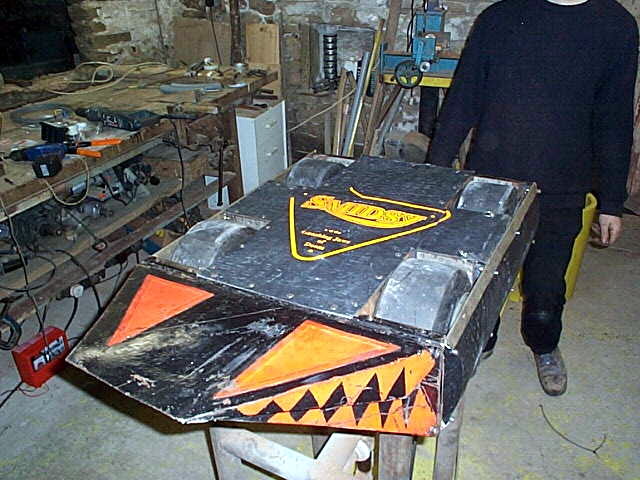
Our robotics team first convened in 1997 to brainstorm a robot design that matched the basic parameters of the televised competition. The nascent SMIDSY would have to be robust and well-armoured, with no extraneous parts that could be broken off. It would have to be fireproof, capable of withstanding inversion, and able to deliver exceptional power and traction.
The layout evolved into a flat rectangular machine with wheels rather than tracks or legs. Those wheels poked out the top and bottom of the chassis such that it could propel itself either way up. The weapon was envisioned as a set of hinged jaws that could double as a wedge or flipper, and our principal means of aggression was to be either pushing our opponents into one of the arena traps, or flipping them over and rendering them immobile. We also fitted a set of steel spikes on the rear, but these were not a spectacularly useful weapon.
Framing with Heavy Metal

The final robot was designed by [Andy Pugh], who has appeared on these pages before with his motorcycle remanufacturing. It took the form of a folded and spot welded sheet steel monocoque chassis with four go-kart wheels. Each wheel had inside it a Sturmey Archer in-hub bicycle gearbox, and the pair of wheels on each side of the machine had bicycle chains linking them to a motor mounted centrally in the chassis. The jaws were hinged at the front top and bottom of the chassis, and were operated by the electric seat rails used in Jaguar cars of the day.
A Protective Coat of Gas Pipeline Detritus
Any robot entering the competition would require sufficient armour to withstand attack from both the other competitors and the house robots used by the TV production company to ensure that their blatant fixing of any semblance of competition remained on track show delivered entertainment to its viewers. We reasoned that the armour priorities lay in the sides of SMIDSY rather than its top and bottom, thus we used a relatively thin polycarbonate/aluminium sandwich for the latter and much more substantial polypropylene at the sides.
The side panels came from an unusual source, British domestic natural gas pipelines are made of a distinctive thick-walled yellow polypropylene pipe that is designed to withstand accidentally being hit with a backhoe digger. It is extraordinarily tough stuff, and the curve in SMIDSY’s side panels was the curve of a section cut from this pipe. There was a period when members of the TeamIxion Robot Wars crew would scour the roadsides of the country spotting discarded off-cuts of yellow pipe left behind by British Gas road works, and eventually we had quite a collection of different sections.
Fire Ist Verboten
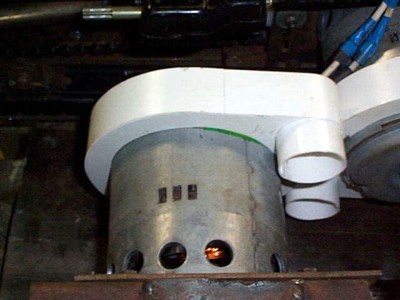
The robots themselves were strictly forbidden from using any form of flame, but no such issues faced the TV company. Both the arena and the house robots featured gas jet flamethrowers, and thus SMIDSY would have to be completely fireproof.
Its internal compartments were sealed, but this raises an additional issue of overheating. The solution was to build a forced air cooling system into the robot. A powerful centrifugal fan drove a set of ducts and clip-on cowls that passed air at high speed through the motors and speed controller compartments, with all air intakes and outlets covered by stainless steel gauze. This system gave us complete protection from flames despite more than one effort from the house robots to use them on SMIDSY. The system proved to be one of our secret weapons as many teams suffered a motor or controller failure from overheating while we completely avoided this fate.
Over-Volting Motor Tech of the Time
Permanent magnet motors were ubiquitous among British Robot Wars teams at the time. The Bosch GPA750 24V 1HP permanent magnet DC units were found in automotive applications such as truck wiper motors. With our forced air cooling we could run them at twice their rated voltage, making SMIDSY with its reliable 4 wheel drive an extremely powerful machine with the traction to use it.
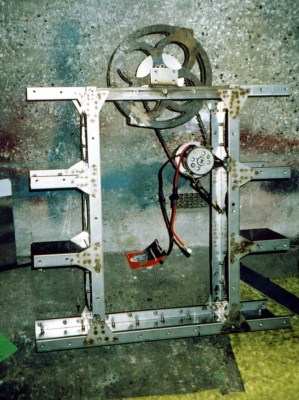
In the 1990s it was still rare to see a motor controller featuring a microcontroller, at least at our level. There were teams that had some success with their own designs, but the majority had off-the-shelf drivers such as the 4QD ones we used. These were PWM controllers employing a traditional hybrid of analogue and digital circuitry, and they took a DC input from a variable resistor. Some teams had RC model servos turning a real variable resistor, we had a little board that interfaced the servo output of our receiver with a solid state potentiometer. Our power came from lead-acid gel-cells, as did that of most other teams. We used packs of the cylindrical single cells instead of the 6V or 12V batteries, and our cells lived in the compartments on each side of SMIDSY between its wheels.
The Arms Race
It’s fair to say the version of SMIDSY that appeared in the first TV series did not shine. There are innumerable fan sites upon which you can find the combat details, however we are here to talk about the machine’s engineering. Following that less-than-stellar performance it was decided that while the basic design had proved reliable, we needed a more useful weapon.
We settled on a spinning disc at the rear of the machine. There was not enough space to hold it so a new wider SMIDSY chassis was produced. It retained the same layout as the original with a few enhancements such as the motors being in line rather than alongside each other. The disc weapon comprised two water-cut steel discs with a pulley between them, fed by a V-belt from an Iskra 1HP DC motor mounted on the chassis. The Iskra’s shaft emerged near the top of the robot and its belt needed to be aligned at its centre, so a pulley was constructed that sat over the motor like a top-hat. The whole was driven from another 4QD board, and when it was spun up it made for a fearsome weapon that would happily chew up almost anything we threw at it.
So… What happened?
I encounter many roboteers in my travels round the world of hackspaces, some of whom are faces from the old days, and others devotees of the current incarnation whose knowledge of SMIDSY’s battles puts my recollections to shame. From them I have learned about the current state of the art in fighting robots, and it is a world away from the technology of a machine such as SMIDSY. Where we had relatively simple hobby grade 49MHz PPM remote control they have much more advanced 2.4 GHz PCM systems. In the place of their brushless motors we had permanent magnet motors with PWM speed controllers from the age of discrete components rather than microcontrollers. Our power came from lead-acid gel-cells rather than lithium-ion packs. It is certain that a machine like SMIDSY would not be even slightly competitive against a modern equivalent, but there is still plenty of interest to be found in other aspects of its construction.
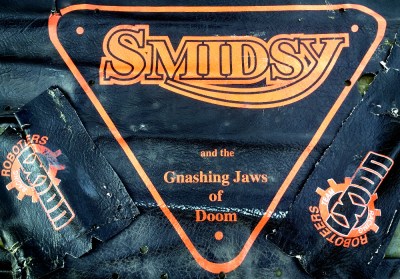
SMIDSY appeared in a total of five series’ of the UK Robot Wars TV shows, as well as a set of TV specials, and (cloaked in a red covering and under the name Sprocket) in a robot Olympics show. We also took it on the road to a series of Robot Wars live shows, ensuring that many of the team’s members had a chance to take the helm.
We never made it to the quarter-finals in any of the competitions, our fate was always to see off all comers in the heats but to be denied progression by eventual finalists or winners. I’ve written here in the past about the dangers of appearing as a contestant in a TV show, it is fair to say that the TV production company used the house robots to ensure what they saw as good programming rather than necessarily fair competition. But we came out of it all with something more than would be granted by success in the final rounds. Nearly twenty years later I would wager we all still have our SMIDSY T-shirts somewhere. Indeed I was once approached at a motorway service station while wearing mine by a couple of fans of the show’s presenter [Craig Charles] (who some of you may also recognise as Red Dwarf‘s [Dave Lister], and who I found to be a top bloke). I have a battle-damaged vinyl SMIDSY outer covering, and the episode serves as a conversational reference in hackerspace discussions. We eventually sold the robot to another team who continue to take it on the road with their live show to this day. So the ‘bot is gone and in a few days we will pay our respects at [Mik]’s memorial, but memories of the fun we had engineering as a team I will carry with me forever.

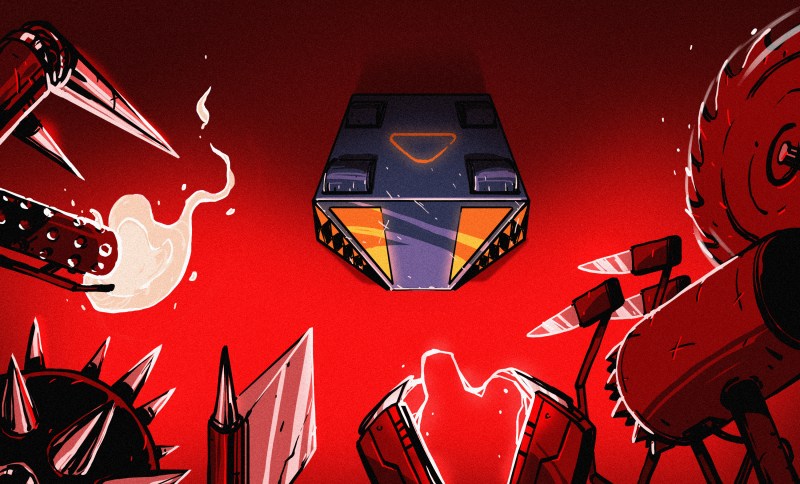














Great article. Thanks for writing it in actual *words* rather than forcing me to (not) watch yet another youtube video!
I would have much preferred a video than all these words, tl;dr
I also appreciated the ability to read your write-up at my own pace instead of having the information slowly injected into my IV via video.
exacly
Loved Robot Wars, it was so Mad MAX. Me and a couple of friends had several sessions in a mates garage drinking beers and designing the next killer robot way back when but it was obvious we were never up to the mechanics, the monstrosity we finally built wouldnt have lasted 5 seconds in the ring. Then Dave’s wife got a car and we had nowhere to continue working on it and it was dumped in a garden shed and I moved to another town. I Often wondered what happened to “Mort”
You might be interested to know that SMIDSY did square off against modern competitors on the rebooted show… sort of. It’s now masquerading as HIGH-5 and was featured in series 9. The unfortunate part was that, well, you were absolutely right. It got pretty soundly trashed by Supernova.
Not really. Same team that owns SMIDSY, and a similar design. But not the same robot. But certainly interesting to see the design evolved a bit.
Same here. To me they were just beefed up R/C toys for guys who had money to burn. I certainly wouldn’t cal them robots.
Exactly my thought on this.
Exactly this discussion was had by the Ixies in about 1998. We built SMIDSY anyway, because we wanted to. We weren’t too precious about it, some of the other teams were.
My great great uncle (i think) and his son were a team in the original robot wars. Best known for mousetrap they actually built three robots through the years. I now have the last remaining piece of mousetrap, everything else was scrapped.
I think they too did the robot olympics program, I wonder if it was the same production company who just called upon the contacts they already had…
I always thought the accepted method used was ; ” Take a wheelbarrow, fill it with your cash, turn it upside down, add motorized RC wheels & watch the production company burn it all on TV for maximum ratings”.
As you can tell I got close to making a proper contender; then I read the rules & realized by entering you were offering the production company unlimited liability for damage to their equipment,arena & audience ( even though their construction & use were not under your influence ). In return they offered the potential to appear on TV. Not a fair trade in my mind.
Absolutely. :)
I guess it’s ok if you’ve got money to burn and really really must get on TV at all costs! (Not for me though)
Sorry for the loss of your friend, Jenny.
Thanks for the excellent article. It was a great glimpse behind the scenes of a show I loved watching “back in the day”.
Twenty years ago?!?! At least my SMIDSY T-shirt still fits. We watched Robot Wars from here, 4,000 miles away, with bated breath. Thank you, Jenny, for writing this up and for this further memorial for Mik.
Crikey, I used to work with Robin yonks ago and now I see he’s featured in my favourite website. Go SMIDSY!